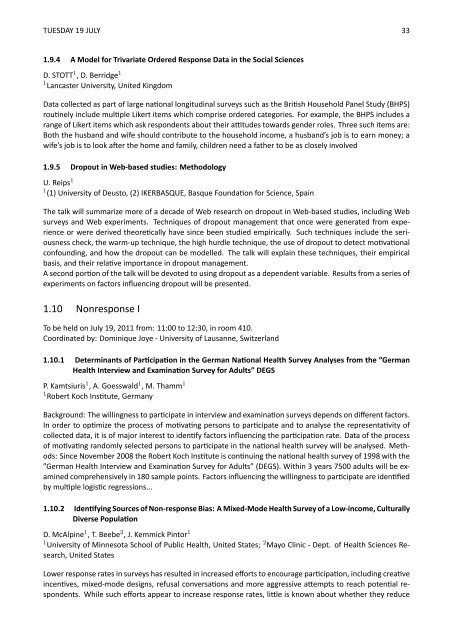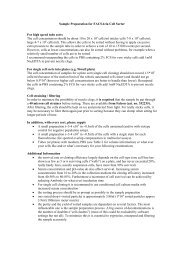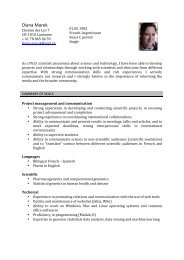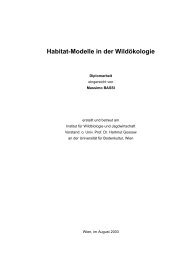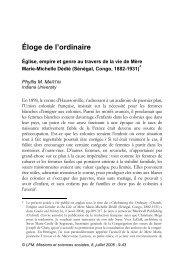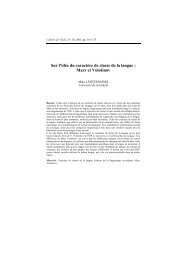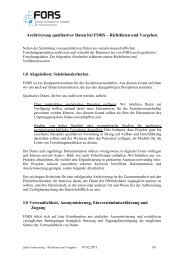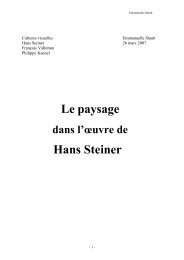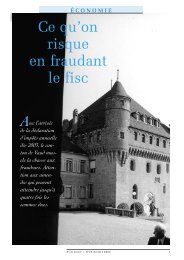conference programme book - European Survey Research ...
conference programme book - European Survey Research ...
conference programme book - European Survey Research ...
You also want an ePaper? Increase the reach of your titles
YUMPU automatically turns print PDFs into web optimized ePapers that Google loves.
TUESDAY 19 JULY 331.9.4 A Model for Trivariate Ordered Response Data in the Social SciencesD. STOTT 1 , D. Berridge 11 Lancaster University, United KingdomData collected as part of large naonal longitudinal surveys such as the Brish Household Panel Study (BHPS)rounely include mulple Likert items which comprise ordered categories. For example, the BHPS includes arange of Likert items which ask respondents about their atudes towards gender roles. Three such items are:Both the husband and wife should contribute to the household income, a husband’s job is to earn money; awife’s job is to look aer the home and family, children need a father to be as closely involved1.9.5 Dropout in Web-based studies: MethodologyU. Reips 11 (1) University of Deusto, (2) IKERBASQUE, Basque Foundaon for Science, SpainThe talk will summarize more of a decade of Web research on dropout in Web-based studies, including Websurveys and Web experiments. Techniques of dropout management that once were generated from experienceor were derived theorecally have since been studied empirically. Such techniques include the seriousnesscheck, the warm-up technique, the high hurdle technique, the use of dropout to detect movaonalconfounding, and how the dropout can be modelled. The talk will explain these techniques, their empiricalbasis, and their relave importance in dropout management.A second poron of the talk will be devoted to using dropout as a dependent variable. Results from a series ofexperiments on factors influencing dropout will be presented.1.10 Nonresponse ITo be held on July 19, 2011 from: 11:00 to 12:30, in room 410.Coordinated by: Dominique Joye - University of Lausanne, Switzerland1.10.1 Determinants of Parcipaon in the German Naonal Health <strong>Survey</strong> Analyses from the ”GermanHealth Interview and Examinaon <strong>Survey</strong> for Adults” DEGSP. Kamtsiuris 1 , A. Goesswald 1 , M. Thamm 11 Robert Koch Instute, GermanyBackground: The willingness to parcipate in interview and examinaon surveys depends on different factors.In order to opmize the process of movang persons to parcipate and to analyse the representavity ofcollected data, it is of major interest to idenfy factors influencing the parcipaon rate. Data of the processof movang randomly selected persons to parcipate in the naonal health survey will be analysed. Methods:Since November 2008 the Robert Koch Instute is connuing the naonal health survey of 1998 with the”German Health Interview and Examinaon <strong>Survey</strong> for Adults” (DEGS). Within 3 years 7500 adults will be examinedcomprehensively in 180 sample points. Factors influencing the willingness to parcipate are idenfiedby mulple logisc regressions...1.10.2 Idenfying Sources of Non-response Bias: A Mixed-Mode Health <strong>Survey</strong> of a Low-income, CulturallyDiverse PopulaonD. McAlpine 1 , T. Beebe 2 , J. Kemmick Pintor 11 University of Minnesota School of Public Health, United States; 2 Mayo Clinic - Dept. of Health Sciences <strong>Research</strong>,United StatesLower response rates in surveys has resulted in increased efforts to encourage parcipaon, including creaveincenves, mixed-mode designs, refusal conversaons and more aggressive aempts to reach potenal respondents.While such efforts appear to increase response rates, lile is known about whether they reduce


